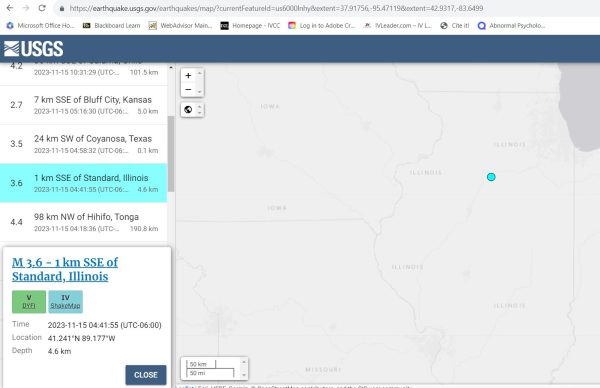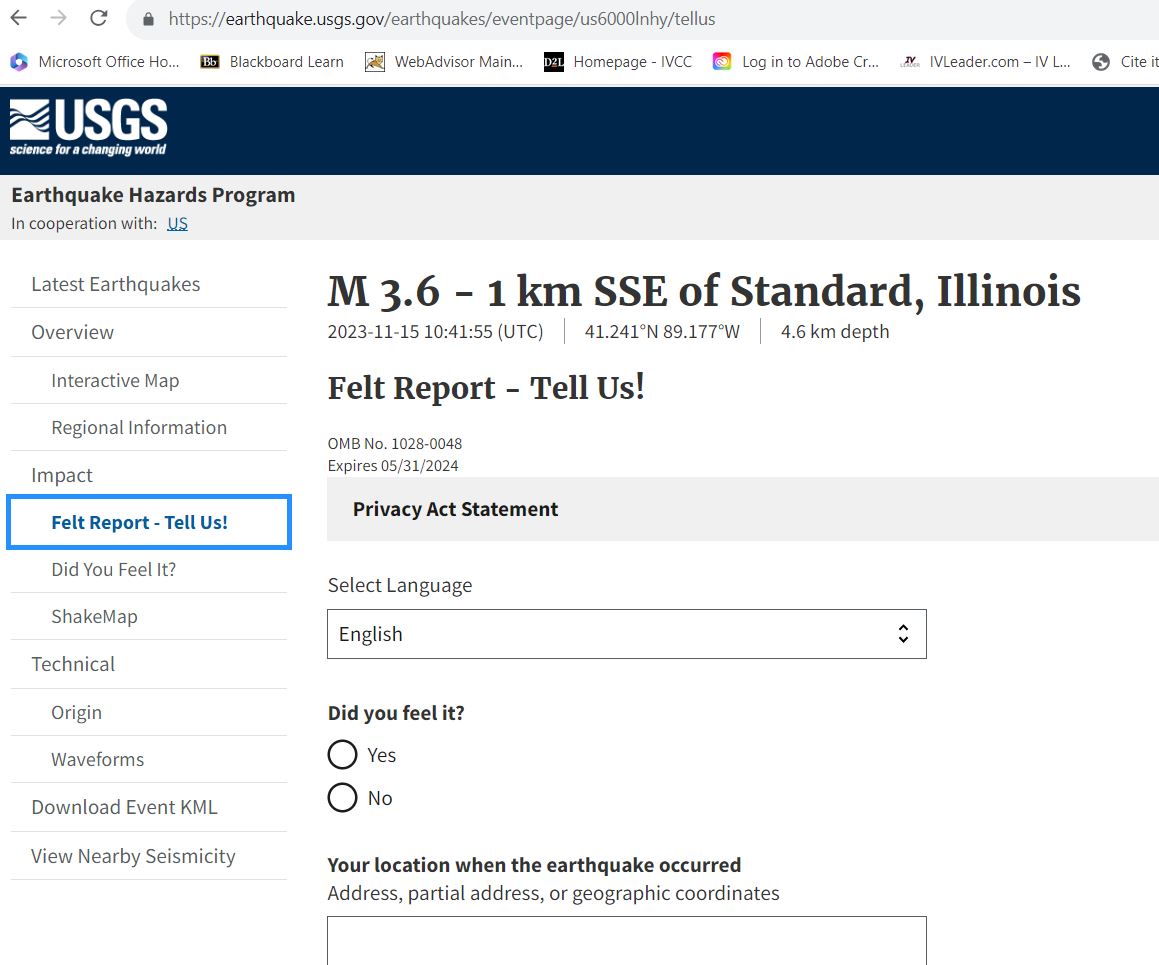
A 3.6 magnitude earthquake roused residents of the Illinois Valley this morning when the quake struck just south of Standard at 4:42 a.m.
“It ruined my sleep,” said Ava Horwach of Peru, a student in Illinois Valley Community College Professor Mike Phillips’ geology class.
Phillips explained the earthquake to his classes today, describing the event as a “small” earthquake, but encouraging area residents to go the U.S. Geological Survey’s website to report the quake.
The U.S. Geological Survey has information and is collecting reports from the public on its web site. You can help by visiting the site and filling out the questionnaire at “Felt Report – Tell Us” https://earthquake.usgs.gov/earthquakes/eventpage/us6000lnhy/executive
Phillips said the reports help scientists to understand more about the quake and its intensity.
In some areas, residents might not feel a 3.6 magnitude quake, and several students said they slept right through it. However, the geography of the Illinois Valley led many in the area to turn to social media to find out what was happening.
“In our area, because the rock layers are fairly uniform and we’ve got some loose material that moves a little bit more, we can feel things that are a little bit smaller and we can feel them for a bigger distance,” Phillips said.
Phillips said the earthquake focus is estimated to be 2.75 mi (4.6 km) below the surface. Reports to the US Geological Survey indicate that earthquake was felt primarily within a 25-mile radius of the epicenter, but people as far away as Chicago and Dubuque, Iowa, also reported minor shaking.
While there is no known fault at this location, earthquakes happen in our area about once every 5-10 years, Phillips said. A M4.2 quake was measured near Troy Grove in 2004 and a M3.5 near Dixon in 1999. The largest on record was a M5.1 in eastern Ogle county (west of DeKalb) in 1909.
No cause of the quake has been reported; however, Phillips listed some factors that could lead to a quake: “The first is the result of pressure on our tectonic plate. The Earth’s surface is made of plates that move and interact with each other. That interaction results in earthquakes where the plates are touching, but some of that stress can result in the occasional earthquake in the middle of the plate where we are located. A second possibility related to the glaciers that left our area around 12-15,000 years ago. When they melted back, the loss of weight allowed our part of the crust to rise very slowly (about 1 mm/year) which can also result in the occasional earthquake.”

